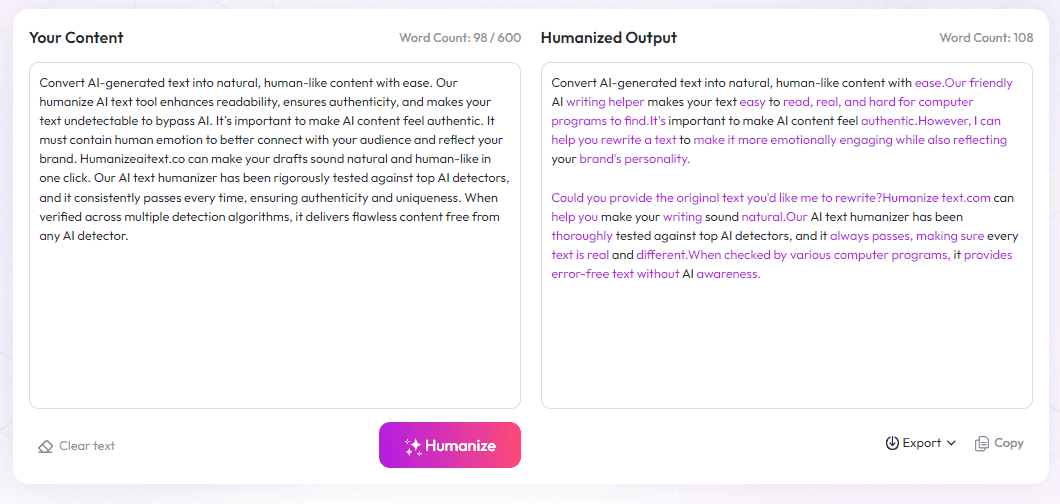Table of Contents
Hey there! I know figuring out how to give helpful feedback can feel tricky and sometimes overwhelming. It’s common to worry about saying the wrong thing or not making a real difference. But don’t worry — good feedback can be a game changer and boost everyone's growth.
If you keep reading, I’ll share straightforward tips to make your feedback clear, honest, and encouraging. You'll learn how to focus on what really matters and how to turn feedback into a positive, ongoing conversation.
Just a few simple practices can make a big difference. Ready to see how? Let’s get started!
Key Takeaways
- Start by setting clear goals for what you want to learn from reader feedback, like improving content or understanding reader needs. Focus on specific areas to gather meaningful insights.
- Choose the right channels to reach your audience, such as surveys, comments, or emails. Use a mix to get timely and diverse feedback from different groups.
- Prioritize fixing major issues that impact engagement or satisfaction. Focus on feedback that can lead to big improvements and make efficient use of your resources.
- Give feedback based on specific actions or behaviors, not vague opinions. Be clear and provide concrete examples to help others understand what to improve.
- Be honest, straightforward, and offer helpful suggestions. Balance positive comments with constructive criticism to motivate and build trust.
- Show appreciation and encourage ongoing input by thanking your readers and asking open questions. Make feedback a regular part of the conversation to foster trust.
- Follow up by sharing how feedback led to changes. Showing that you listen and act encourages continued participation and develops a culture of growth.

When it comes to gathering reader feedback that truly makes a difference, the first and most crucial step is defining clear goals. Without knowing what you want to learn—whether it's improving content quality, increasing engagement, or understanding reader preferences—your feedback efforts are likely to miss the mark. Leading companies and organizations often struggle with this, as only about 20% of employees receive feedback weekly, highlighting a major gap in communication that can stifle growth—making clear feedback goals even more essential (Gallup, 2024).
Clearly Define the Goals of Feedback
Start by asking yourself what insights you want from your readers. Are you trying to refine your product, better understand their needs, or identify pain points? Setting specific targets—like improving customer satisfaction scores or boosting content relevance—helps prioritize feedback collection efforts. For example, if your goal is to make content more engaging, focus on questions about readability, usefulness, and emotional resonance. This way, you gather actionable data instead of vague opinions.
Select the Right Readers and Use Suitable Feedback Channels
Knowing your audience is key. Different groups prefer different ways of sharing their thoughts. Millennials and Gen Z, for example, often favor instant feedback like quick surveys or social media comments, while other demographics might prefer detailed emails or focus groups. Don't just pick one channel—combine methods such as online surveys, comment sections, or direct emails to reach a broad spectrum. Since many organizations notice that 32% of employees wait over three months for feedback, choosing timely channels ensures your feedback remains relevant and impactful (Workleap, 2021).
Focus on Key Issues and Prioritize Feedback
With limited time and resources, it’s best to zero in on the most critical areas. For instance, if data shows that frequent feedback correlates with higher engagement—43% of highly engaged employees receive weekly feedback—then concentrate on gathering insights that influence those engagement drivers (Forbes, 2017). Prioritizing feedback about major pain points or areas with the biggest impact not only saves effort but also pushes your improvements in the right direction.
Provide Feedback That Is Behavior-Focused and Specific
When you give feedback, make sure it’s about observable actions, not vague impressions. Instead of saying "You’re not engaging enough," try "In the last presentation, you spoke very quickly and didn’t leave time for questions." Specific, behavior-based input helps your reader understand exactly what to change and how. This approach prevents misunderstandings and makes feedback more effective, leading to real improvements.

5. Be Honest, Clear, and Constructive in Your Feedback
Honest feedback builds trust, so always share your true observations without sugarcoating or exaggerating.
Clear feedback leaves no room for confusion—use simple language and direct examples to illustrate your points.
Constructive comments focus on solutions, offering suggestions instead of just pointing out faults.
For example, instead of saying "Your report was poor," say "The report lacked data analysis; adding specific figures would make it stronger."
This way, your feedback becomes a helpful guide, encouraging improvement rather than discouragement.
6. Balance Positive and Negative Feedback Effectively
Research shows that employees respond better when positive comments are woven into corrective feedback.
Aim for a ratio of about 3 positive comments to 1 constructive critique to keep morale high.
Highlight what’s working well before pointing out areas for growth to show appreciation and motivate continued effort.
For instance, say, "Your presentation was engaging, and I think adding more visuals could make it even better."
This approach keeps the conversation balanced and focused on growth, which is key to sustaining engagement.
7. Show Appreciation and Encourage Ongoing Feedback
People do better when they feel valued. So, always thank readers for their input and show genuine appreciation.
Encourage continuous feedback by asking open-ended questions like, "What could we do differently?" or "How can I support you better?"
Regularly highlighting how previous feedback led to improvements reinforces the value of sharing honest opinions.
For example, if an employee suggested a new process that saved time, acknowledge that it made a real difference.
When feedback becomes a two-way street, trust grows, and people are more inclined to share openly in the future.
8. Follow Up and Show How Feedback Makes a Difference
Don’t just collect feedback and forget about it—act on it.
Follow up with your readers to share what changes have been made based on their input.
This shows that their opinions matter and encourages them to keep participating.
Set clear timelines: after receiving feedback, update your team or readers within a specific period.
For example, if feedback points out a confusing part of your content, revise it, then send a note explaining how their input led to the improvement.
Consistent follow-up creates a culture of continuous improvement and trust, which keeps the feedback cycle alive and productive.
FAQs
Begin by clearly defining the goals of the feedback to ensure it is relevant and focused on helping improve specific areas.
Select readers who are relevant and use channels suited to the message, such as face-to-face or written formats, depending on the situation.
Prioritizing helps focus on the most impactful issues, ensuring feedback efforts are efficient and lead to meaningful improvements.
Provide feedback that is behavior-focused and specific, highlighting actions rather than personal traits to ensure clarity and receptiveness.



